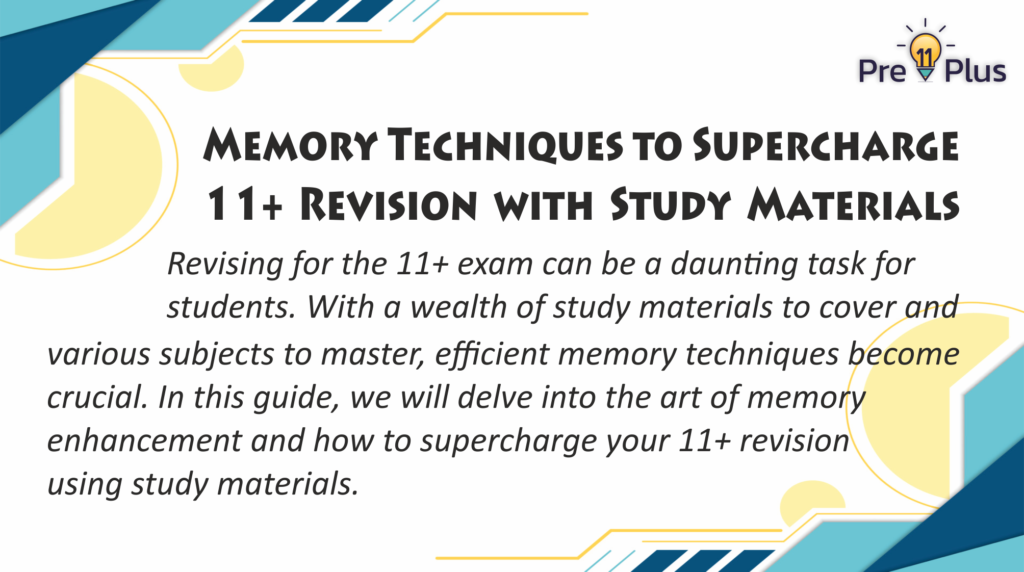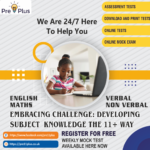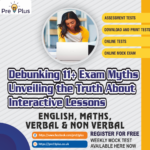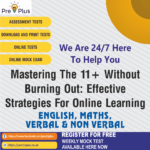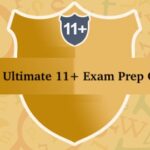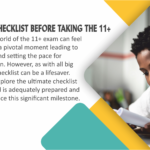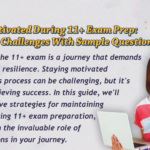Memory Techniques to Supercharge 11+ Revision with Study Materials
Revising for the 11+ exam can be a daunting task for students. With a wealth of study materials to cover and various subjects to master, efficient memory techniques become crucial. In this guide, we will delve into the art of memory enhancement and how to supercharge your 11+ revision using study materials.
The Challenge of 11+ Revision:
The 11+ exam assesses students on multiple subjects, including Maths, English, Verbal Reasoning, and Non-Verbal Reasoning. Memorizing facts, formulas, vocabulary, and concepts across these subjects can be overwhelming. Effective memory techniques are essential to streamline the revision process and boost retention.
Harnessing Memory Techniques for 11+ Success:
-
Mind Mapping:
Mind mapping is a visual technique that helps students organize information. Create mind maps for each subject, connecting related concepts and facts. This visual aid enhances memory recall and simplifies complex ideas.
-
Spaced Repetition:
Spaced repetition involves revisiting study materials at increasing intervals over time. This technique optimizes long-term retention. Use flashcards or digital apps to implement spaced repetition in your revision.
-
Acronyms and Mnemonics:
Acronyms and mnemonics are memory aids that help you remember lists or sequences. Create memorable acronyms or phrases using the first letter of key concepts or terms in your study materials.
-
Visualization:
Visualize complex concepts or formulas. Transform them into mental images or stories. The vividness of mental images enhances memory retention and recall.
-
Active Learning:
Engage actively with your study materials. Summarize paragraphs in your own words, teach the content to someone else, or create quizzes and practice tests. Active learning deepens understanding and memory.
-
Chunking:
Break down large amounts of information into smaller, manageable chunks. This technique simplifies the process of memorization and allows for better retention.
-
Associative Memory:
Connect new information to existing knowledge or personal experiences. Creating associations between concepts in your study materials helps you remember them more effectively.
-
The Memory Palace:
The memory palace technique involves mentally placing information within a familiar location, such as your home. As you mentally “walk” through this space, you recall the associated information. This technique is particularly effective for lists and sequences.
The Role of Study Materials:
Effective memory techniques become even more potent when paired with the right study materials. High-quality study materials, such as textbooks, practice papers, and online resources, provide structured content and practice questions that are essential for 11+ preparation.
-
Textbooks:
Textbooks offer comprehensive coverage of subject matter. They provide a structured foundation for your revision, ensuring you don’t miss key topics.
-
Practice Papers:
Practice papers are invaluable for applying memory techniques. Solve past papers to assess your understanding and improve your ability to recall information under exam conditions.
-
Online Resources:
Online resources, including interactive lessons and quizzes, complement traditional study materials. They offer a dynamic and engaging way to reinforce your memory techniques.
-
Flashcards:
Flashcards are a portable memory aid. Create flashcards for key facts, formulas, and vocabulary words. Carry them with you for quick revision anytime, anywhere.
-
Supplementary Materials:
Supplement your study materials with additional resources, such as educational videos, podcasts, and educational games. These multimedia options reinforce your understanding and memory.
The Science Behind Memory Techniques:
Memory techniques are rooted in cognitive psychology. They leverage principles of effective learning and memory retention. For example, spaced repetition aligns with the spacing effect—a phenomenon where information is better retained when reviewed at intervals. Visualization capitalizes on the dual coding theory, which suggests that combining verbal and visual information enhances memory.
Active learning activates the encoding process, strengthening memory traces. Chunking aligns with Miller’s Law, which proposes that the human working memory can efficiently process around seven chunks of information at a time. Associative memory capitalizes on the power of associations in memory recall.
The Memory Palace technique aligns with the method of loci, an ancient mnemonic device that capitalizes on spatial memory. Understanding the science behind these techniques can empower you to use them more effectively in your 11+ revision.
Conclusion:
Mastering memory techniques is the key to supercharging your 11+ revision. When combined with high-quality study materials, these techniques transform the overwhelming task of memorizing vast amounts of information into a structured and efficient process. Whether you’re creating mind maps, using spaced repetition, or visualizing complex concepts, these techniques are powerful tools that align with the principles of cognitive psychology. By embracing memory enhancement strategies and leveraging the right study materials, you can confidently tackle the 11+ exam and increase your chances of success.

